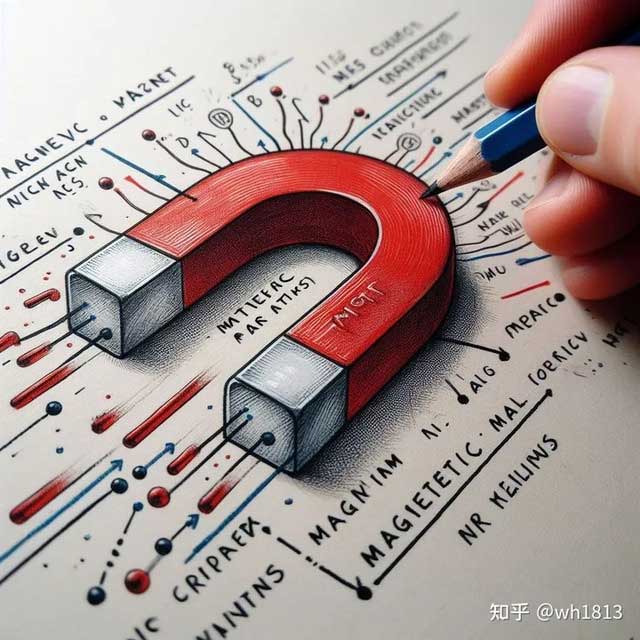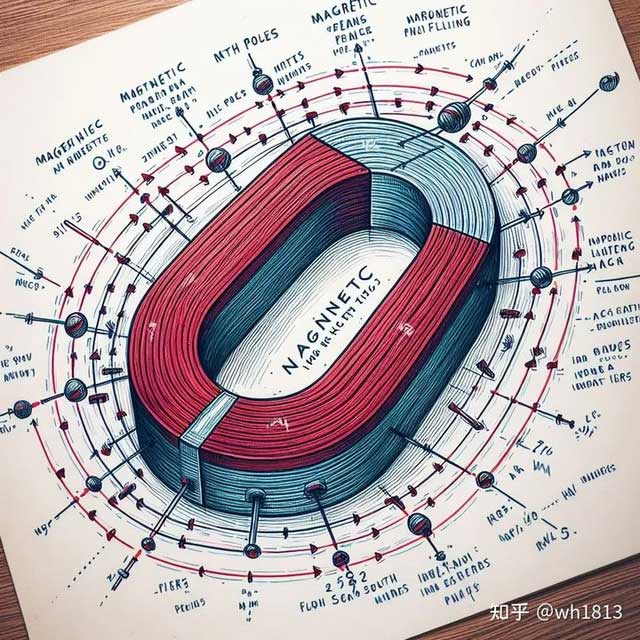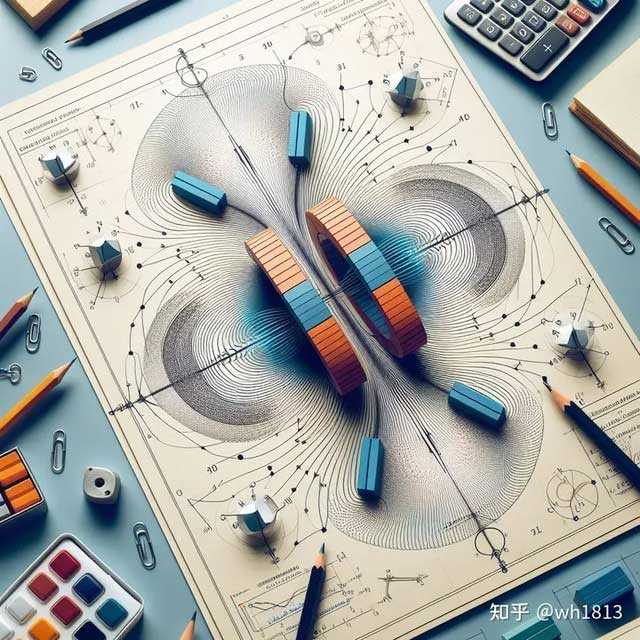Have you ever wondered what would happen if you cut a magnet in half? You might think that eventually, you would end up with two pieces of metal that have no magnetism, similar to cutting an apple, but that is not the case.
No matter how many pieces you cut a magnet into, each piece will still retain its magnetism and will have a north and south pole. These small magnets will attract or repel each other just like a larger magnet.
This miraculous phenomenon makes magnets an essential tool in human life. You can use them to decorate your refrigerator or to explore the inside of the body. What is the magical power of magnets that allows them to do this?

Magnets are essential tools in human life. (Illustrative image).
To answer this question, we must first understand what magnets are made of. All matter, including magnets, is composed of atoms. In every atom, the nucleus is surrounded by one or more negatively charged electrons. Each of these electrons creates its own tiny magnetic field, which scientists refer to as “spin.” If the magnetic fields are small enough and aligned in the same direction, the material itself will become magnetic.
“Spin” of electrons is an abstract concept. Technically, no one has ever seen the spin of an electron – it is too small to be observed under a microscope. However, physicists know that electrons have a magnetic field because they have measured it. One way this field is generated is through the rotation of electrons.

“Spin” of electrons is an abstract concept. (Illustrative image).
Whenever possible, electrons pair up so that their spins cancel each other out, resulting in a total magnetic field of zero for the atom. But in some elements, such as iron, this does not occur. The number of electrons and how they are positioned around the nucleus may lead to each iron atom having an unpaired electron, creating a small magnetic field.
In non-magnetic materials, these individual magnetic fields point in various random directions. In this state, they nearly cancel each other out, so the material overall exhibits no magnetism. However, under suitable conditions, these tiny atomic magnetic fields can align and point in the same direction. These very small magnetic fields combine to create a larger magnetic field, allowing the iron material to become a magnet.

The Earth also has its own magnetic field. (Illustrative image).
Many magnets used in daily life, such as refrigerator magnets, are permanent magnets. In these materials, the magnetic fields of many atoms have been permanently aligned by some external force – as if they were placed in a stronger magnetic field.
Typically, the stronger magnetic field is generated by electricity. Electricity and magnetism are fundamentally related because magnetic fields are created by the movement of electric charges. That is why rotating electrons have magnetic fields, but scientists can also use electricity to create extremely strong magnets. Running enough current through a coil will generate a very strong magnetic field that exists as long as the current flows. These electromagnets are commonly used in physics research. They are also used in medical tools such as Magnetic Resonance Imaging (MRI) machines.

Typically, the stronger magnetic field is generated by electricity. (Illustrative image).
The Earth also has its own magnetic field – this is how compass needles work. Scientists define the North Pole of a magnet as the point that would point toward the North Pole of the Earth if the magnet were free to rotate. But technically, Gregory Scott Boebinger, director of the National High Magnetic Field Laboratory in Tallahassee, Florida, and currently a physics professor at Florida State University explains that this means that the magnetic north pole of the Earth is actually the magnetic south pole because opposite poles attract each other.
In physics convention, magnetic field lines emanate from the north pole of a magnet and enter its south pole, forming a closed loop. You can observe this phenomenon by conducting a simple experiment using some iron filings and a magnet. Place the magnet on a piece of paper and sprinkle some iron filings on the paper. You will see the iron filings arranged along the magnetic field lines, creating a pattern. This is a visualization of the magnetism of the magnet.

Magnets are one of the deepest mysteries of physics. (Illustrative image).
Physicists have also discovered other arrangements of magnetic poles, including quadrupoles, where a combination of north and south poles is arranged in a square. However, there is one elusive goal: no one has yet discovered a magnetic monopole.
Electrons and protons are electric monopoles, and they carry either a positive or negative charge. However, electrons (and other particles) have two magnetic poles. Being fundamental particles, they cannot be further divided. The difference between how particles behave electrically and magnetically has intrigued many physicists. Its discovery would challenge the laws of physics that we currently understand.
Magnets are one of the deepest mysteries of physics, and although humanity has used them for thousands of years, scientists are still uncovering new information about how they work. Perhaps one day we will uncover all their secrets.


















































